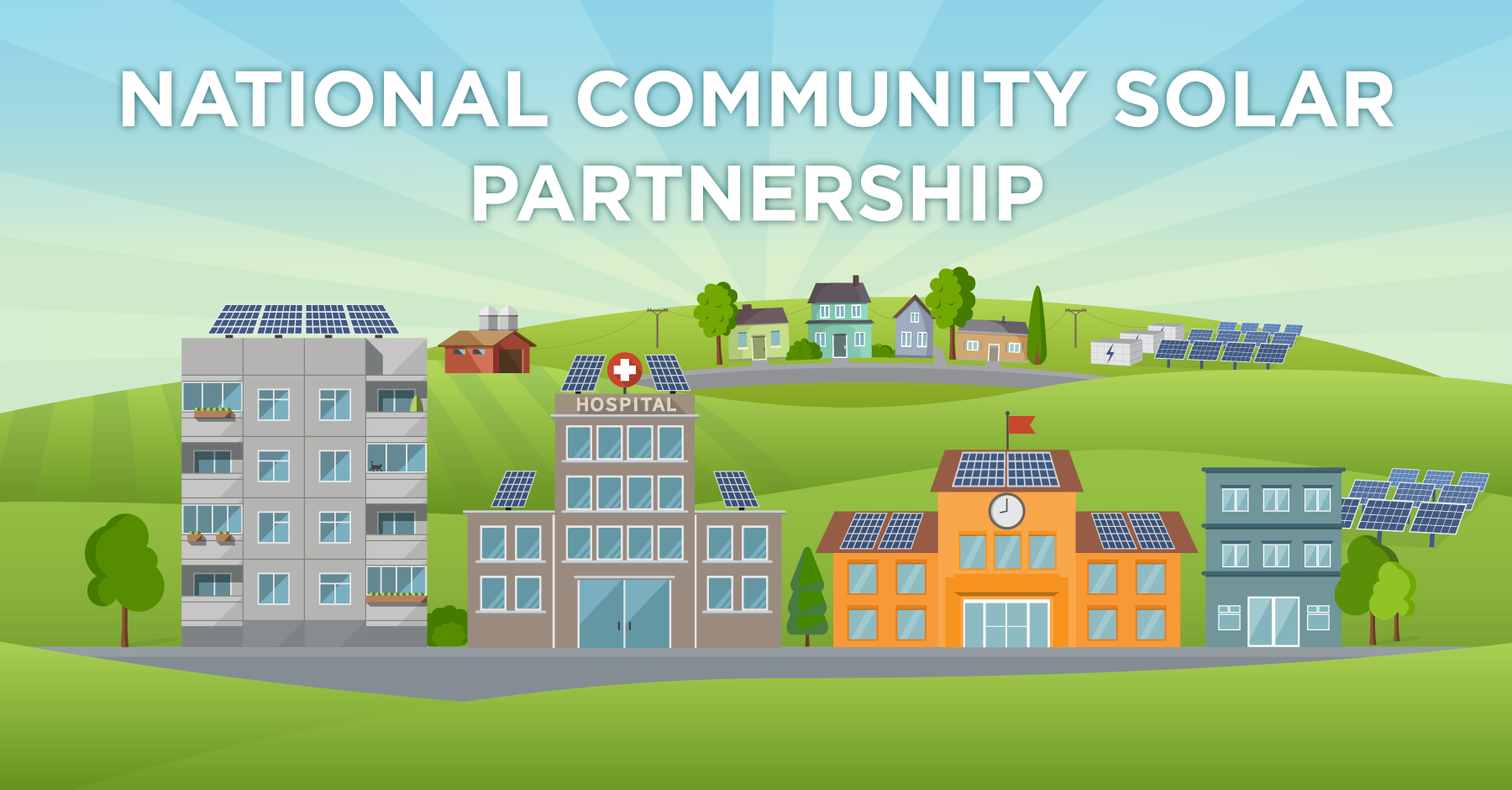National Community Multifamily Solar Partnership
Introduction
In America, a significant portion of the population, particularly low-income households, faces substantial challenges in accessing affordable and sustainable energy solutions. Low-income households, defined as those earning 80% or less of the area median income, reside in approximately 60% of multifamily housing units. These units exhibit a wide range of ownership and financing structures, including various types of federally subsidized housing and naturally occurring, non-subsidized units. Additionally, the building types vary, with some being mastered and others individually metered. This diversity in Multifamily Affordable Housing (MFAH) can significantly impact the costs and energy burden that residents face, ultimately influencing the benefits they receive from on-site and off-site solar installations. Given that low-income households often pay a disproportionately higher share of their income toward energy-related expenses, it is crucial to explore innovative solutions to alleviate this burden. One such solution is the National Community Solar Partnership (NCSP), which aims to work with MFAH owners, their partners, and communities to identify and implement successful community solar models. This initiative is a cornerstone of the broader Solar Partnership efforts aimed at expanding access to affordable solar energy for all Americans.

Understanding the Energy Burden in Low-Income Households
Low-income households face a unique set of challenges when it comes to energy consumption and costs. These households often reside in older, less energy-efficient buildings, which can lead to higher energy consumption and, consequently, higher energy bills. Additionally, the lack of access to modern, energy-efficient appliances and technologies further exacerbates the problem. According to recent studies, low-income households spend an average of 8.6% of their income on energy costs, compared to just 2.3% for higher-income households. This disparity highlights the urgent need for initiatives like the Solar Partnership to address the energy burden faced by these communities.
The Role of Multifamily Affordable Housing (MFAH)
Multifamily Affordable Housing (MFAH) plays a crucial role in providing shelter to a significant portion of the American population. However, the diverse nature of MFAH units, in terms of ownership, financing, and building type, presents both opportunities and challenges. Federally subsidized housing units, for instance, often have specific regulatory frameworks that can either facilitate or hinder the adoption of renewable energy solutions. On the other hand, naturally occurring, non-subsidized units may lack the necessary financial incentives to invest in energy-efficient technologies. The Solar Partnership aims to bridge these gaps by working closely with MFAH owners and stakeholders to identify and implement community solar models that are both financially viable and environmentally sustainable.
Introducing the National Community Solar Partnership (NCSP)
The National Community Solar Partnership (NCSP) is a collaborative effort led by the U.S. Department of Energy (DOE) to expand access to affordable community solar for every American household by 2025. The NCSP brings together a diverse group of stakeholders, including MFAH owners, community leaders, energy providers, and technical experts, to leverage peer networks and technical assistance resources. By establishing clear goals and addressing persistent barriers, the NCSP aims to create a more inclusive and sustainable energy future for all Americans. This initiative is a key component of the broader Solar Partnership, which seeks to transform the energy landscape by promoting the adoption of renewable energy solutions in underserved communities.
Implementing Successful Community Solar Models
To achieve its ambitious goals, the NCSP focuses on identifying and implementing successful community solar models that can be replicated across the country. These models involve the installation of solar panels in community locations, such as rooftops, parking lots, or open spaces, and the distribution of the generated electricity to participating households. By pooling resources and sharing the benefits of solar energy, community solar projects can significantly reduce the energy burden on low-income households. The NCSP provides technical assistance and support to help MFAH owners and communities navigate the complexities of implementing these projects, from initial planning to long-term maintenance. This holistic approach ensures that the benefits of solar energy are accessible to all, regardless of income or housing type.
Overcoming Barriers to Community Solar Adoption
Despite the potential benefits of community solar projects, several barriers can hinder their widespread adoption. These barriers include high upfront costs, regulatory hurdles, and a lack of awareness among potential participants. The Solar Partnership addresses these challenges by providing financial incentives, streamlining regulatory processes, and conducting outreach and education campaigns. By working closely with local communities and stakeholders, the NCSP aims to create an environment that fosters innovation and collaboration. This collaborative approach not only accelerates the adoption of community solar but also builds a foundation for long-term sustainability and resilience.
The Future of the Solar Partnership
The future of the Solar Partnership is bright, with numerous opportunities for growth and expansion. As technology continues to advance and costs decrease, solar energy is becoming an increasingly viable option for households across the income spectrum. The NCSP’s efforts to expand access to community solar will not only reduce energy costs for low-income households but also contribute to a cleaner, more sustainable energy future for all Americans. By fostering partnerships and promoting innovative solutions, the Solar Partnership is paving the way for a more equitable and resilient energy system.
Conclusion
The Solar Partnership, through initiatives like the National Community Solar Partnership (NCSP), is making significant strides in addressing the energy burden faced by low-income households in America. By working closely with MFAH owners, community leaders, and other stakeholders, the NCSP is identifying and implementing successful community solar models that can be replicated across the country. This collaborative effort not only reduces energy costs for low-income households but also promotes a more sustainable and inclusive energy future for all Americans. As we look to the future, the Solar Partnership continues to lead the way in transforming the energy landscape and ensuring that the benefits of solar energy are accessible to everyone.
